It wouldn’t be a Civilization without World Wonders. The series mainstay returns in Civilization 7, and the competition to build them all is just as fierce as ever. In fact, if anything, the AI seems even more prone to rush their personal best Wonders than ever before.
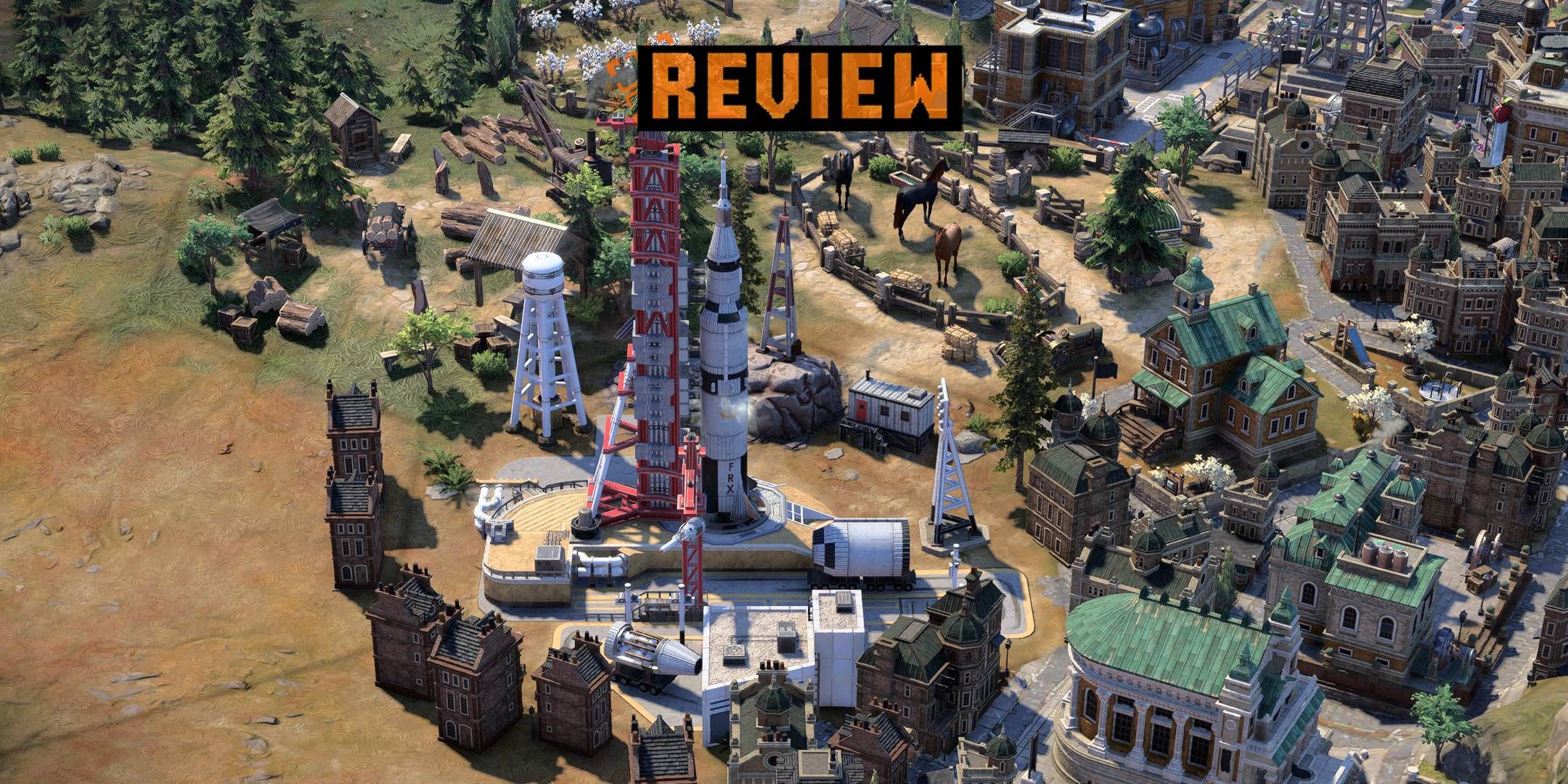
Related
Civilization 7 Review – Classic Civilization With A Few New Twists
An excellent art style, fantastic sound track, and great leaps forwards for replayability, Civilization 7 is a great game. But it will prove divisive.
And that’s the thing about Wonders – they all fit certain “builds” better than others. But this is a tier list, which means we’ll not only be referencing the best leaders for each Wonder, but we’ll keep a keen eye on the best of the bunch from an overhead perspective. If you’re puzzled over which Wonders to prioritize, you’ve come to the proper place.
Don’t read too much into the individual placements within each tier; they’re sorted alphabetically!
This guide is a work in progress. As of right now, it covers all Wonders from the Antiquity Age, but it will carry over into the Exploration and Modern Ages in short order.
S-Tier: Massive Marvels Of The World
Gate Of All Nations
Gate of All Nations, available in the Antiquity Age, adds a flat +2 Support in all wars. Every war. For the rest of the game. Diminishing Support levels can really mess things up for you, and war in Civ 7 can often mean spending Influence to keep things in your favor, which makes the Gate of All Nations extremely powerful.
From a peacekeeper’s perspective, it helps keep your people happy if and when a rude civ decides it’s time to attack without wasting valuable Influence. From a warmonger’s perspective, it is genuinely game-changing. All you’ll need is the Mastery for the Discipline Civic, but be warned: many civs seem poised to aim for it.
Terracotta Army
Another war-centric Ancient Age Wonder happens to reach S-tier; we promise we’re not giving Military Legacy Paths unfair emphasis, but this is how it’s panned out. Terracotta Army grants a free Army Commander; and remember, Army Commanders will always revive after a set period of time once defeated. They’re also fairly expensive to build or buy.
You’ll get +2 Production. Not a big deal, but +25 percent Army Experience is. This is going to matter whether you’re deploying your troops on an offensive bonus or a defensive one, because Commanders are the only EXP-gaining units in Civilization 7, and they include numerous potenntial settlement yield gains as well.
Plus, you can more readily keep foes away from you – and you need these in order to transfer more Military Units into successive ages. Grab the Tactics Civic for it.
Weiyang Palace
+6 Influence beginning with the Antiquity Age and extending to the end of the game is a big deal in this game. Whereas with other ongoing stats, such as Science and Culture, don’t give much weight to a +6 bonus for long, Influence per turn can be quite a challenge to build to an appreciable degree for most leaders.
With Influence, you can obtain more favorable terms in Endeavors, Sanction rulers you intend to weaken, and more than anything, speed along the processes of becoming a Suzerain (and perhaps, in time, the full owner of) a city-state. For those charting a Domination-style win, all that excess Influence means more War Support, too.
Weiyang Palace, then, is an all-around great deal. Obtain the chance to construct this Wonder through the Citizenship Civic.
A-Tier: Highly Memorable Monoliths
Colossus
The Skilled Trades Civic in the Antiquity Age comes near the end of the tree, but the Colossus is still a good grab, especially if you’re on a more prolonged game setting (which, in our experience, leads to a slightly more relaxed tempo with a bit more time for building despite the broadly synchronized speed adjustments).
The Colossus packs +3 Gold, +3 Resource Capacity, and +1 Economic Attribute Point. Attribute Points are never unwelcome, and Gold is indeed a powerful tool, but in the Antiquity Age, it’s generally not easy to increase most cities’ Resource Capacities, so even if you’re not in it for the Silk Roads Legacy Path, this is a serious boost to productivity.
Dur-Sharrukin
Dur-Sharrukin, when constructed, serves as a fortified district, meaning it’s the equivalent of having walls built around the tile. Since it comes during the Antiquity Age, when there’s ample room for hostile independent powers to have sprung up across the map, Ancient Walls can be a lifesaver on higher difficulties.
Of course, if all the Dur-Sharrukin did was add Ancient Walls, you’d just… build Ancient Walls instead. It also elevates Combat Strength by +3 in all districts in every settlement. This can be quite significant if you’re struggling with Civ 7’s equivalent of barbarians, and a total game-changer if a militant civ is parked next door.
Making matters all the better, it’s unlocked via Discipline Civic, which is right near the beginning of the Ancient Age’s tree. On the flip side, this means your rivals may get to building it very soon.
Hanging Gardens
Hanging Gardens is an Ancient Age Wonder obtainable once a civ has learned Irrigation. With it, all farms in the settlement receive +1 Food. But more importantly, you’ll gain an Expansionist Attribute Point… and +10 percent Growth Rate in all cities.
It’s that last bit that impresses us so much. A one-city bonus to that would still land it in B-tier for us; all cities, for the vast majority of the game? That’s good enough that we recommend scooping this up if you have the chance whether you’re playing as an expansionist or not.
Mausoleum Of Theodoric
+3 Production. +1 Military Attribute Point. +100 percent yields and HP restoration from all pillaging. The Mausoleum of Theodoric is made of stern stuff. You might not want to grab this if you aren’t intent on warmongering; and that’s an important caveat. But if you are, this is what we’d call a must-snag.
And the AI seems to agree in spades, as we’ve seldom been the ones to actually build it. In fact, the Mausoleum of Theodoric might be the most AI-obsessed Wonder in Civilization 7. Bearing that in mind, if you do pursue it, you’ll need the Skilled Trades tech, so make a (relative) beeline if so.
Nalanda
What do you get when you build Nalanda in the Ancient Age? A lot. +3 Science and a Scientific Attribute Point can all come in handy regardless of your focus, but obviously, it’s quite welcome for Scientific leaders.
What matters more? The +1 Codex and +2 Codex Slots. The Great Library Legacy Path requires ten Codices in all, and many of the ways in which to acquire these won’t necessarily offer slots as well. You’ll need to get the slots separately, except in cases such as, well, Nalanda.
Nalanda, then, is an utmost recommendation for Great Library pursuers. You’ll need Literacy before you can erect it.
Pyramid Of The Sun
With due respect to the Pyramids, Pyramid of the Sun is the superior Wonder in Civ 7. +3 Culture, and +2 Culture on all Quarters within the settlement, can add up fast. Just as important is its fairly easy acquisition. All you’ll need is a Flat Tile beside a District.
The one down side (apart from the fact that not every civ will have plentiful Flat Land – just most) is that Pyramid of the Sun is only unlocked right near the end of the Ancient Age, with Mathematics, so there’s a limited window to get it built.
B-Tier: Fairly Compelling Frameworks
Emile Bell
Emile Bell provides a unique Diplomatic Endeavor called the Ginseng Agreement. This Endeavor, when activates, allows you and the agreeing leader to both gain additional food in their capital. You’ll also gain a Diplomatic Attribute Point.
Emilie Bell, like many Wonders, is highly situational. If you’re playing a leader and/or civ which benefits from doubling down on expanionism, like Confucius, your added gains will help further things along. Since it only applies to the capital, it can come across as mediocre; those gains are strong enough that we’d say go for it.
You’ll need the Code of Laws Civic’s Mastery for this.
Great Stele
With Great Stele, an Ancient Age Wonder, you’re rewarded for all future Wonder-building through a consistent gift of 200 Gold every time a new one is constructed for the remainder of the game. It’s often not until the Modern Age that your per-turn income will begin to skyrocket, so this is a powerful tool for a long time.
If you’re playing with the intent to build many further Wonders, Great Stele is a no-brainer. If you don’t foresee that happening, we wouldn’t recommend it. This makes it situational – but mighty enough for a B-tier ranking because it fits flawlessly when it’s usable. You’ll need the Writing tech for it.
Ha’amonga ‘a Maui
Ha’amonga ‘a Maui provides +2 Culture as base yield, as well as +1 Culture and +1 Food on all Fishing Boats within the settlement it’s constructed in. You’ll even net a Cultural Attribute Point. It needs to be adjacent to a Coast tile; furthermore, it must also be within a Grassland or Tropical Tile.
Available in the Ancient Age, Ha’amonga ‘a Maui’s value is hard to argue against. You’re probably going to want at least one coastal settlement, so getting some added Culture out of one for the eras to come will be a nice continuous perk, especially at the start of subsequent ages, when you’re facing major reduction.
But is it worth spending the time to construct? We’d say, for those gunning for the Wonders of the World Cultural Legacy Path, the answer is yes; the rewards are just so focused on your ambitions all-around. If you aren’t doing so, just don’t be tempted to turn a town into a city just for this, as it’s not going to achieve a tremendous amount for you.
Colosseum
The Colosseum can be built once players reach the Entertainment Civic roughly midway through the Antiquity Age. It offers +3 Culture as a base yield in conjunction with +2 Happiness on all Quarters within the settlement it’s constructed. It must be built beside a District.
All told, the Colosseum’s pretty good. Getting that early Culture boost can help with any leader eyeing a long-term Culture-related victory, and the +2 Happiness has a nice enough potential spread to make a quantifiable difference to your settlement, though you can certainly do without it regardless of your play style.
Monks Mound
With Monks Mound, your rewards are +3 Food and +4 Resource Capacity within the settlement it’s constructed. That’s pretty good, mainly the Resource Capacity. In Civilization 7, your Resource Capacity slots can be tricky to upgrade outside your capital, as we’ll no doubt mention a couple of times in this guide.
Mind you, the Commerce Civic necessary for Monks Mound is right near the end of the Ancient Age’s Civic Tree. Unless there’s still plenty of time left on the clock, you may find it more pivotal to focus your empire-wide efforts elsewhere, especially if you’ve entered into the Crisis.
Petra
Petra is great if you have a desert settlement, especially a capital – which means select civs will benefit from it, while many others won’t even have the opportunity to construct it when it’s unlocked via Code of Laws in the Ancient Age.
Petra offers +2 Gold, as well as +1 Gold and +1 Production in all Desert Tiles. Unless their bonuses are very good, we rank these more specific Wonders a bit lower, but don’t hesitate to grab Petra if the opportunity arises.
Pyramids
The Pyramids provide +1 Gold and +1 Production for all Minor and Navigable River Tiles in its settlement. That’s just likely to matter enough that we’ll keep them in the B-tier, but you might have to found a city with them in mind. Still, Navigable River Tiles are broadly strong. So, no big deal.
The impact of these extra yields during the Ancient Age does add up if there are enough instances of it, and you’ll only need the Masonry tech to build them. Masonry’s early on the tech tree.
C-Tier: Passingly Intriguing Domiciles
Angkor Wat
Available via the Philosophy Civic late in the Antiquity Age, Angkor Wat provides +3 Happiness and +1 Specialist Limit. It must be placed next to a river.
The Happiness boost has no strings attached, but conversely, it lacks any room for higher yields. +3 is pretty good, especially in the Antiquity Age, but with Angkor Wat coming so late, its short-term usefulness is highly limited, leaving it a fair but unspectacular role for the rest of the game.
Mundo Perdido
It’s not that Mundo Perdido is bad, per se. All you need is Mysticism‘s Mastery in the Ancient Age and you’ll get +1 Food and +1 Science for all Tropical Tiles in the settlement. As you can imagine, this is heavily situational.
For many civs, it’s just not smart to go hunting for Tropical Tiles in the first place, so unless you start with several in the vicinity, or you’ll glean specific boosts from them for other reasons, we can’t say Mundo Perdido should ever be a priority.
Oracle
Gone are the days of Civilization 4, when the Oracle was so important that players would rush the heck out of it. In Civilization 7, it’s fine. You get +2 Culture as well as +10 extra Culture per age when Narrative Events with Culture rewards transpire.
Well, Narrative Events do happen in every age. But they won’t always include Culture (though admittedly, it’s pretty common), and when they do, the +10 bonus is probably not quite as grand as it sounds. If you find that you will really need more Culture during your Ancient Age game, it’s a fine source, but otherwise, we’re mixed.
Sanchi Stupa
+2 Happiness for a base yield never hurts. It can mean the difference between content citizens and angrily damaged improvements if you find yourself engaging in wars. Less likely to give the battle-inclined a consistent boost is the +1 Culture for every five Happiness in the settlement. It must be built on Plains.
The +1 Culture is probably going to be more visible later in the game despite Sanchi Stupa’s placement in the Ancient Age. Achieving more than ten or so excess Happiness is pretty tough to do when your cities are relatively small. By then, the yield, while appreciated, isn’t much to write home about.

Next
Civilization 7: Legend Unlocks, Explained
Confused about those locked attribute nodes – and a few related mechanics – in Civilization 7? So were we.
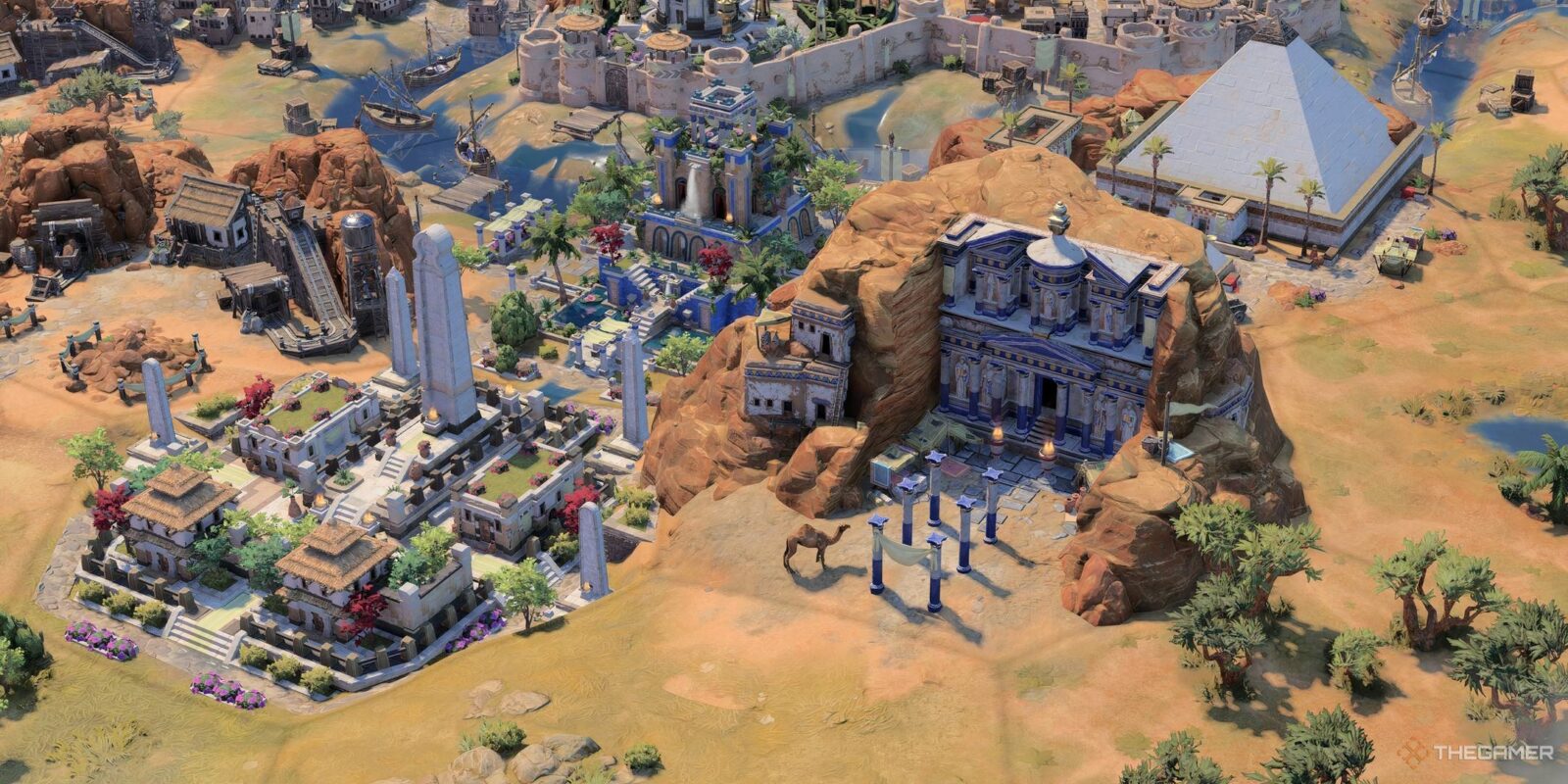

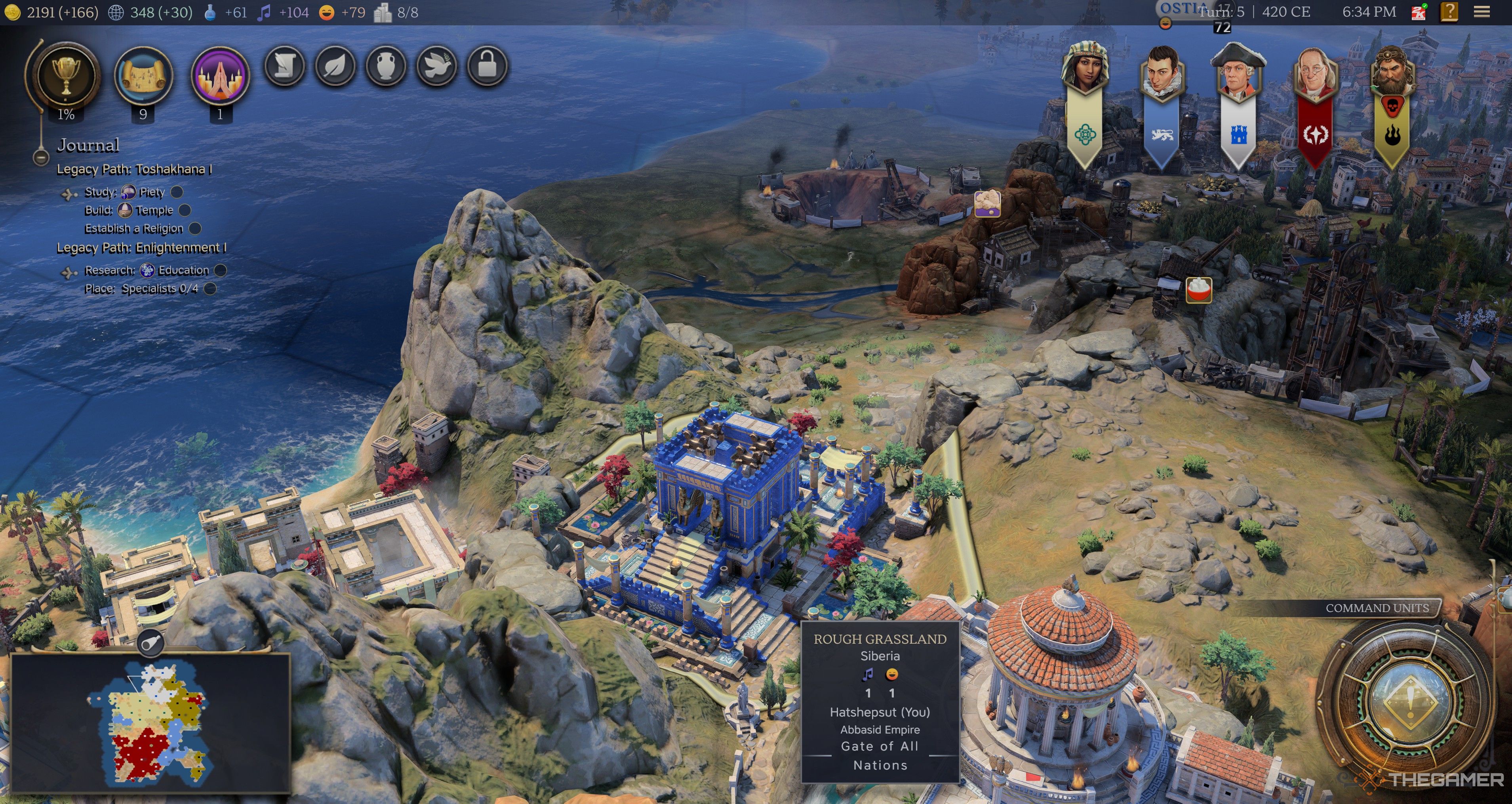
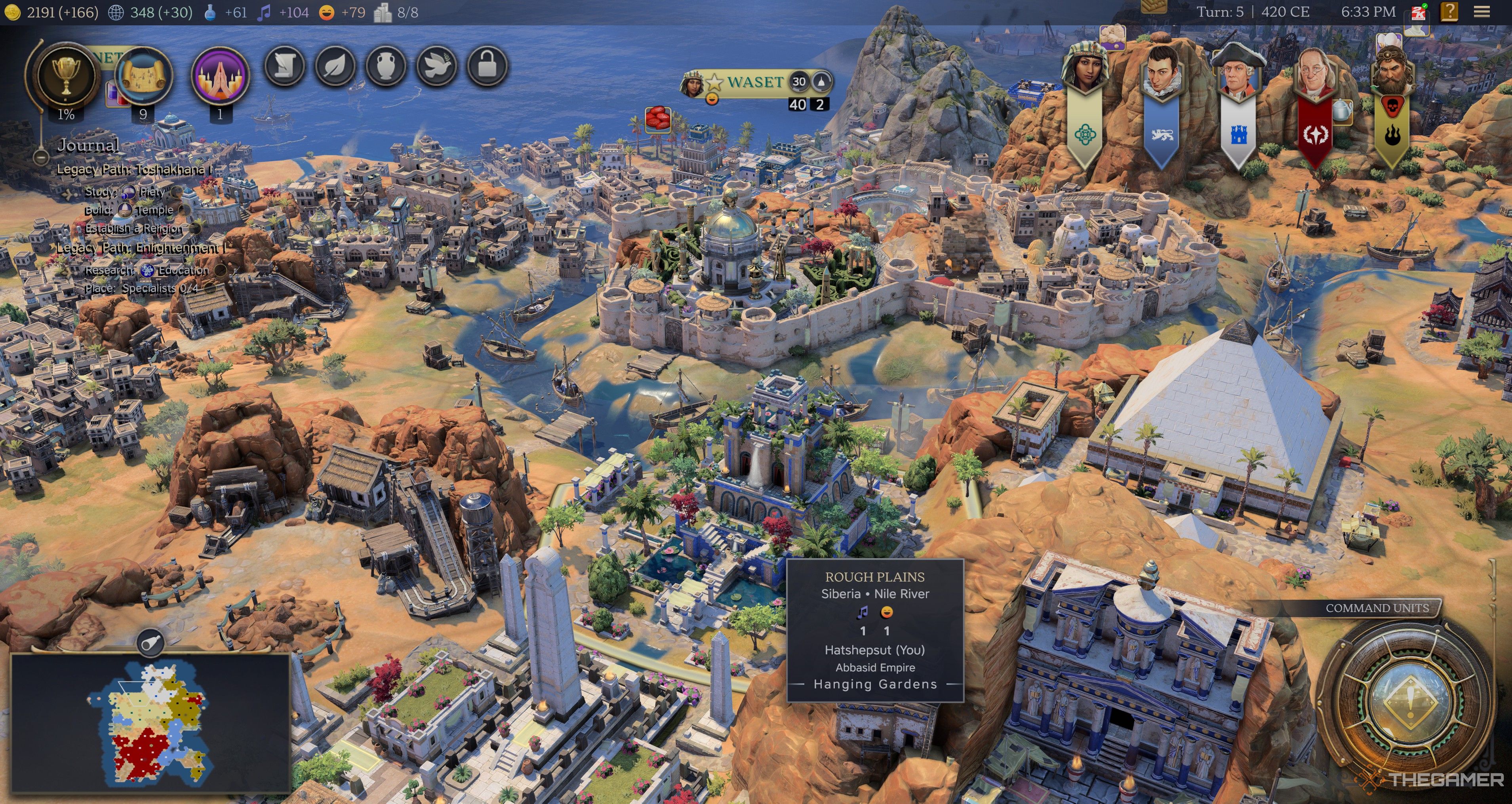
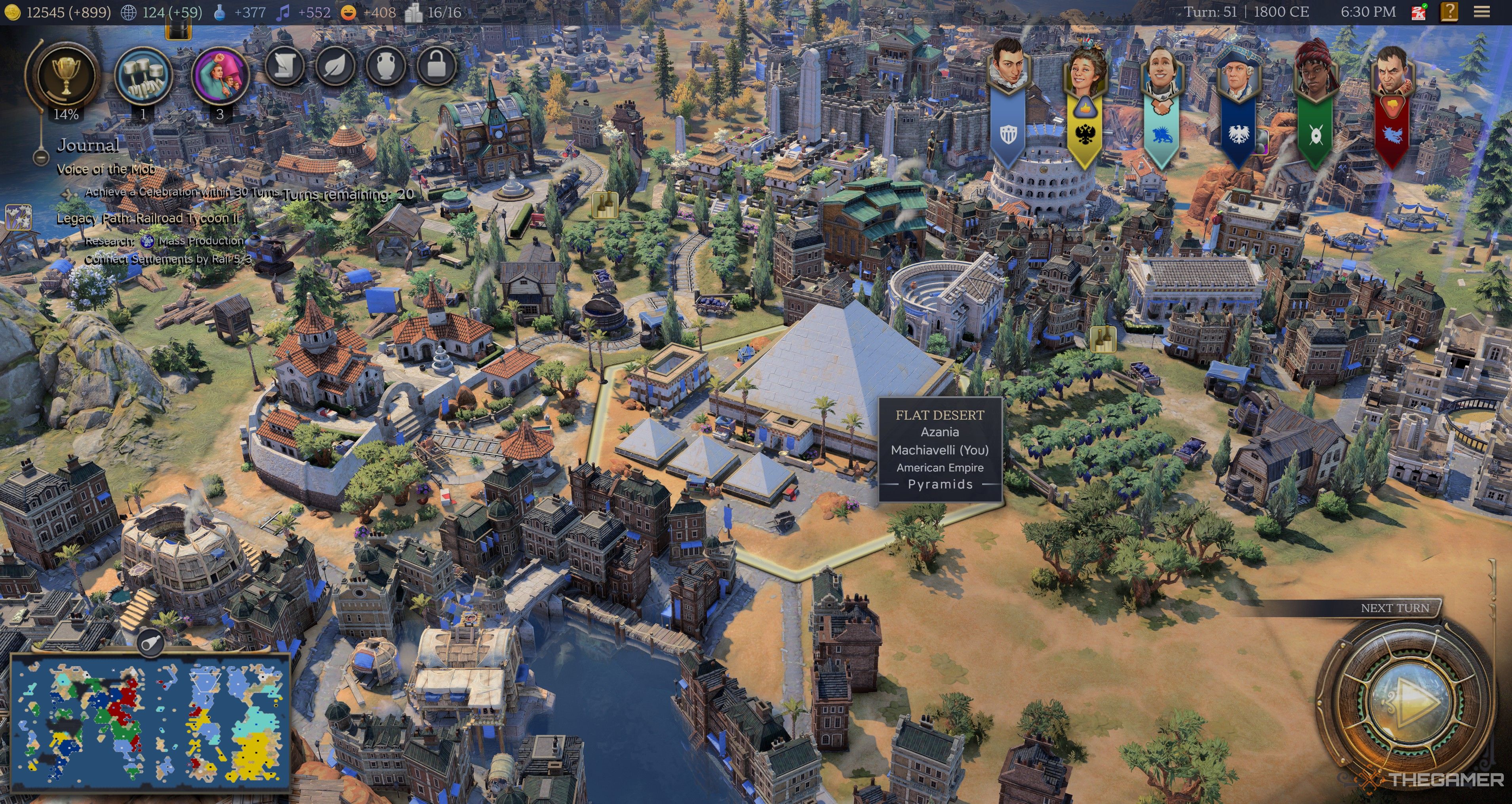
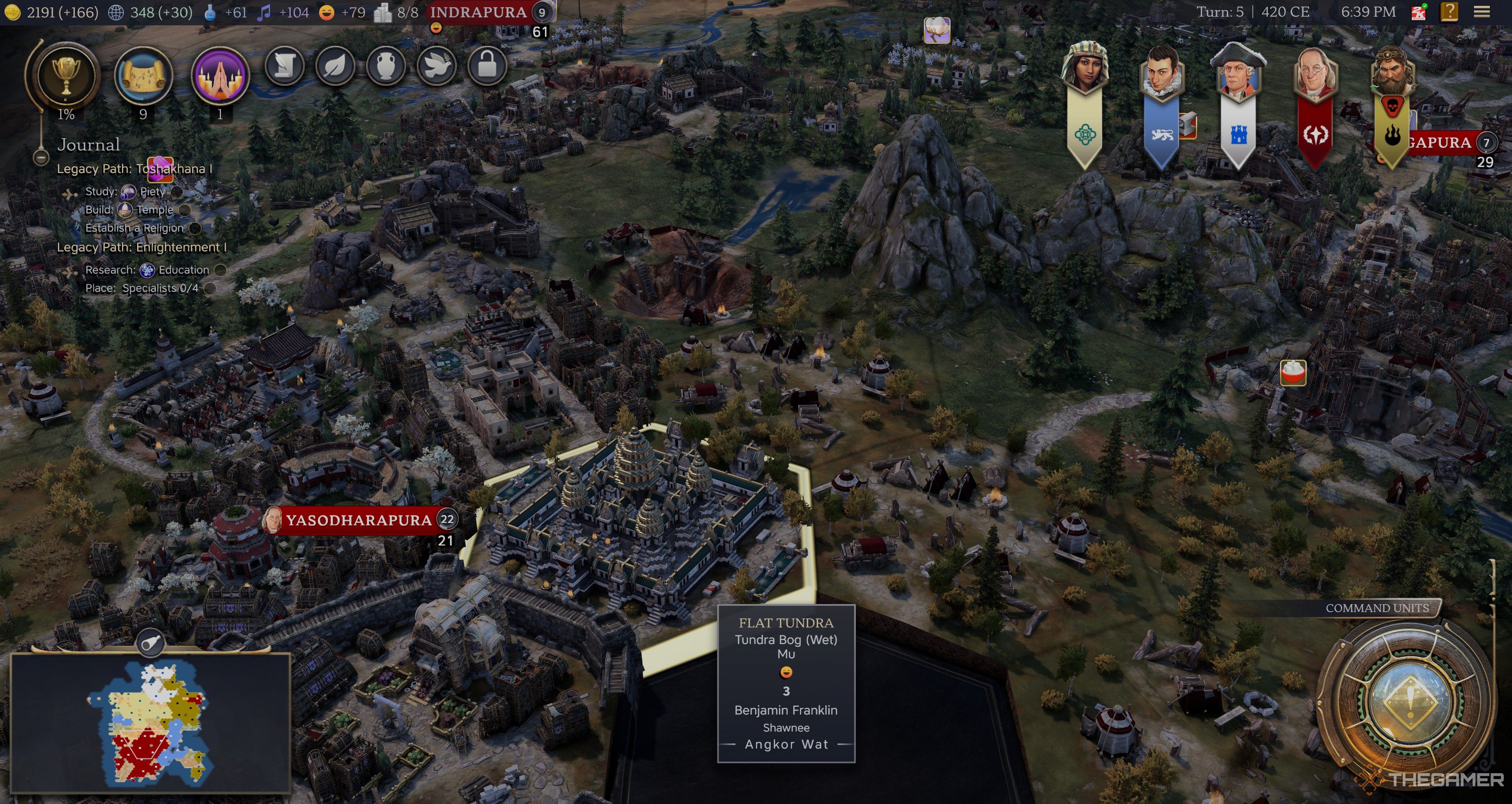




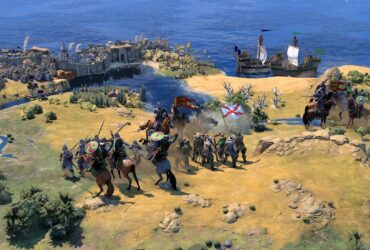





Leave a Reply